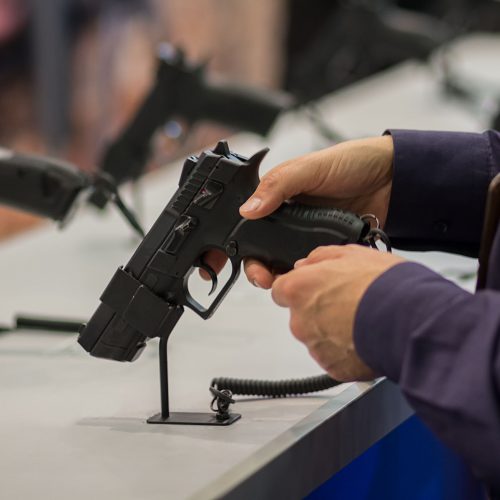Military
Global Arms Trade Hits Highest Level Since Cold War

Published:
Last Updated:

The global arms race is on again, based on a measure of arms trade over the past five years, compared to any similarly measured period since the Cold War. The information is based on data from the widely followed Stockholm International Peace Research Institute (SIPRI) report, which issued its report for the dates from 2007 to 2011 and 2012 to 2016.
Most of the world’s arm sales come from the same five nations, which have been the top vendors for many years. In the new SIPRI report, these big exporters — the United States, Russia, China, France and Germany — represented 74% of the “volume of exports.”
The world largest importer was India. The report remarked:
India was the world’s largest importer of major arms in 2012–16, accounting for 13 per cent of the global total. Between 2007–11 and 2012–16 it increased its arms imports by 43 per cent. In 2012–16 India’s imports were far greater than those of its regional rivals China and Pakistan.
India is the second largest nation in the world, based on its population of 1.33 billion residents, behind China’s 1.38 billion. Its gross domestic product ranks seventh on a nominal basis at $2.2 trillion. India has had a factious relationship with its northern neighbor Pakistan since the two nations were separated in 1047.
Sales of arms to Middle East nation have risen rapidly. Two nations are the primary drivers of this:
Saudi Arabia was the world’s second largest arms importer in 2012-16, with an increase of 212 per cent compared with 2007–11. Arms imports by Qatar went up by 245 per cent.
The exporting nations are dominated by the United States, which represents one-third of all arms sales. “Its arms exports increased by 21 per cent compared with 2007–11.” Dr. Aude Fleurant, Director of the SIPRI Arms and Military Expenditure Programme, said:
The USA supplies major arms to at least 100 countries around the world—significantly more than any other supplier state. Both advanced strike aircraft with cruise missiles and other precision-guided munitions and the latest generation air and missile defence systems account for a significant share of US arms exports.
At the current rate of increase, the arms trade could reach Cold War levels within two or three years.
Methodology: The SIPRI Arms Transfers Database contains information on all international transfers of major weapons (including sales, gifts and production licenses) to states, international organizations and armed non-state groups from 1950 to the most recent full calendar year, 2016. SIPRI data reflects the volume of deliveries of arms, not the financial value of the deals. As the volume of deliveries can fluctuate significantly year-on-year, SIPRI presents data for five-year periods, giving a more stable measure of trends.
Retirement planning doesn’t have to feel overwhelming. The key is finding expert guidance—and SmartAsset’s simple quiz makes it easier than ever for you to connect with a vetted financial advisor.
Here’s how it works:
Why wait? Start building the retirement you’ve always dreamed of. Click here to get started today!
Thank you for reading! Have some feedback for us?
Contact the 24/7 Wall St. editorial team.